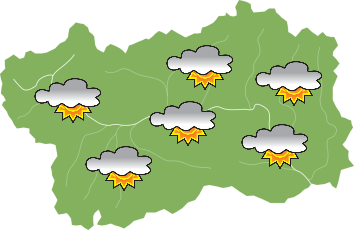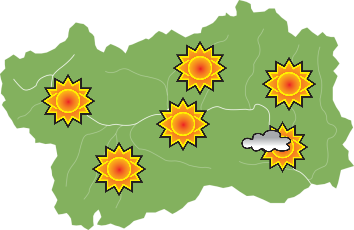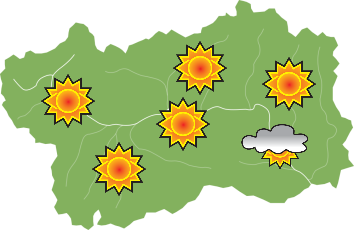On reaching Crétaz di Miochaz, two routes branch out from where you can park your car, both leading to the last villages in Perloz that are described as inaccessible because in the past you had to go up and come down from them only on foot.
They seem like “eagle’s nests”, but easy pathways take you uphill in several minutes of hiking.
On the section upstream from Crétaz, above a large terrace that overlooks the central valley and the Canavese plain, you can find Varfey. This small village is unusual because it straddles the border line between the towns of Perloz and Lillianes and the letters P / L are impressed on the pathways and walls.
On a lower level, Chemp is a settlement on a rocky high ground smoothed down by glaciers on the border with chestnut orchards.
Proud shapes of large stone constructions from the end of the XIX century stand out on the countryside while alongside stands a tiny immaculate chapel and simpler, older rural constructions.
In* Varfey*, some barns remind us of the cereal producing role played by the surrounding abandoned terraces, while in Chemp, a magnificent XVII century barn stands alongside a home whose facade has been embellished by an arched porch.
Far from the frenetic context of daily city life, these villages are an oasis of peace, still inhabited in certain periods of the year. Work is still done in the stable or sculpting laboratory. Among the houses of the village of Chemp you can visit an open-air museum with works by various artists.
It is a good idea to tip-toe by.
The villages of Chemp and Varfey can now be reached by car (Varfey from Lillianes and Chemp from Perloz).
In Spring, an amazing flower grows in Col Fenêtre at Perloz (1670 m): the peony. The area is part of the “Natura 2000” ecological network.
The well equipped path that takes you there in 20 minutes, runs alongside two villages that will delight lovers of traditional architecture: Pesse, settlement on a gently sloping terrace above the Nantey Valley, is mostly populated in the summer season, while the village of Fenêtre, clinging to the slope once dedicated to agropastoralism, has been abandoned.










